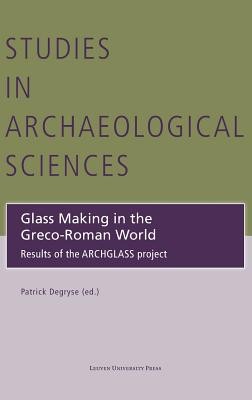
- We will send in 10–14 business days.
- Publisher: Leuven University Press
- Year: 2015
- Pages: 208
- ISBN-10: 9462700079
- ISBN-13: 9789462700079
- Format: 16 x 24.1 x 1.8 cm, hardcover
- Language: English
- SAVE -10% with code: EXTRA
Glass Making in the Greco-Roman World (e-book) (used book) | bookbook.eu
Reviews
Description
This book presents a reconstruction of the Hellenistic-Roman glass industry from the point of view of raw material procurement. Within the ERC-funded ARCHGLASS project, the authors of this work developed new geochemical techniques to establish the provenance of primary glass making. They investigated both production and consumer sites of glass and identified suitable mineral resources for glass making through geological prospecting.Because the source of the raw materials used in the manufacturing of natron glass can be determined, new insights in the trade of this material are revealed. While eastern Mediterranean glass factories were active throughout the Hellenistic to early Islamic period, western Mediterranean and Italian sources also supplied the Mediterranean world with raw glass in early Roman times. By combining archaeological and scientific data, the authors develop new interdisciplinary techniques for an innovative archaeological interpretation of glass trade in the Hellenistic-Roman world, highlighting the development of glass as an economic material.Contributors: Sara Boyen (KU Leuven), Dieter Brems (KU Leuven), Florence Cattin (KU Leuven), Mike Carremans (KU Leuven), Veerle Devulder (KU Leuven), Thomas Fenn (KU Leuven), Monica Ganio (KU Leuven), Rebecca Scott (KU Leuven), Frank Vanhaecke (Ghent University)
EXTRA 10 % discount with code: EXTRA
The promotion ends in 19d.21:13:27
The discount code is valid when purchasing from 10 €. Discounts do not stack.
- Publisher: Leuven University Press
- Year: 2015
- Pages: 208
- ISBN-10: 9462700079
- ISBN-13: 9789462700079
- Format: 16 x 24.1 x 1.8 cm, hardcover
- Language: English English
This book presents a reconstruction of the Hellenistic-Roman glass industry from the point of view of raw material procurement. Within the ERC-funded ARCHGLASS project, the authors of this work developed new geochemical techniques to establish the provenance of primary glass making. They investigated both production and consumer sites of glass and identified suitable mineral resources for glass making through geological prospecting.Because the source of the raw materials used in the manufacturing of natron glass can be determined, new insights in the trade of this material are revealed. While eastern Mediterranean glass factories were active throughout the Hellenistic to early Islamic period, western Mediterranean and Italian sources also supplied the Mediterranean world with raw glass in early Roman times. By combining archaeological and scientific data, the authors develop new interdisciplinary techniques for an innovative archaeological interpretation of glass trade in the Hellenistic-Roman world, highlighting the development of glass as an economic material.Contributors: Sara Boyen (KU Leuven), Dieter Brems (KU Leuven), Florence Cattin (KU Leuven), Mike Carremans (KU Leuven), Veerle Devulder (KU Leuven), Thomas Fenn (KU Leuven), Monica Ganio (KU Leuven), Rebecca Scott (KU Leuven), Frank Vanhaecke (Ghent University)


Reviews